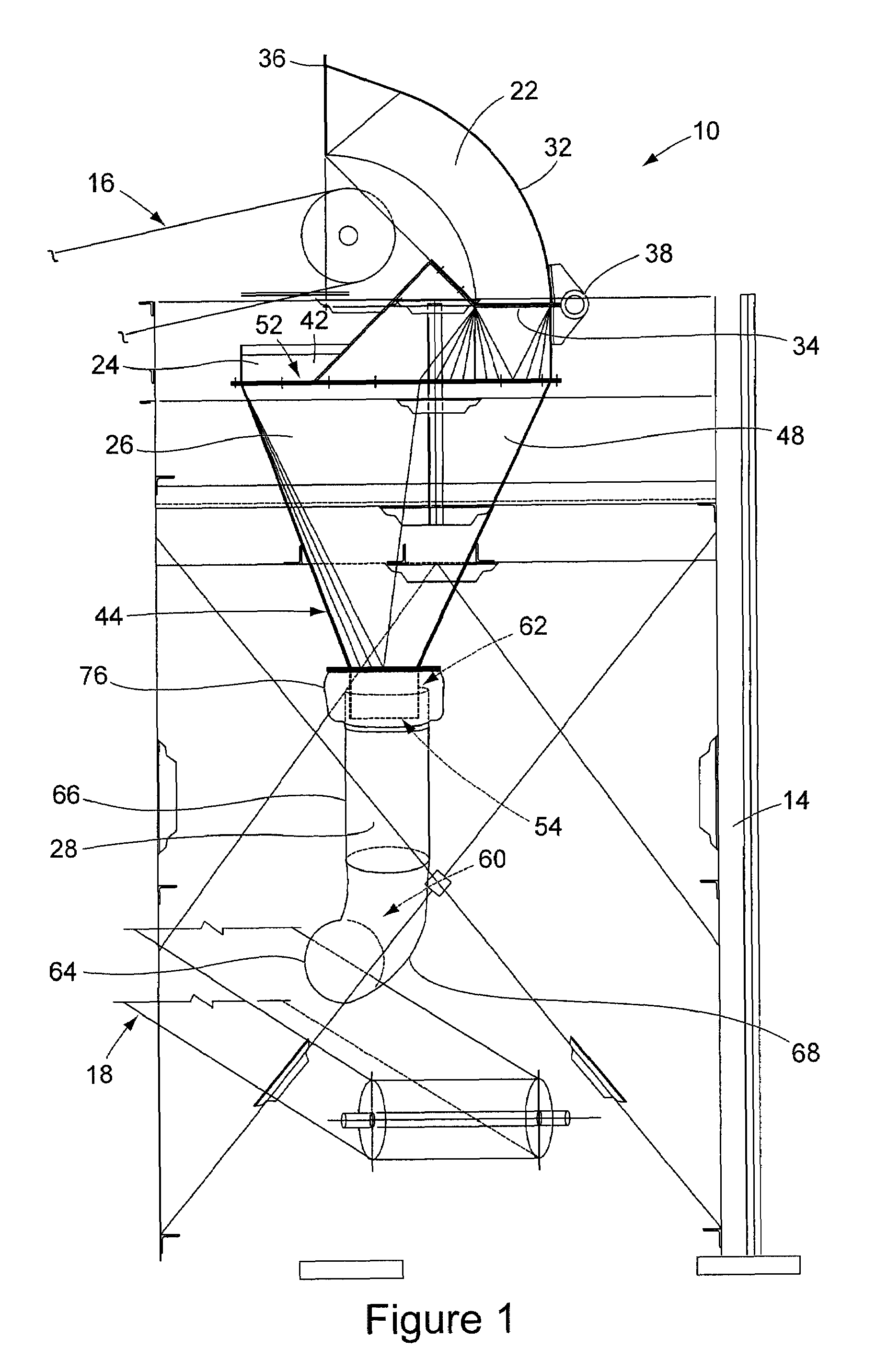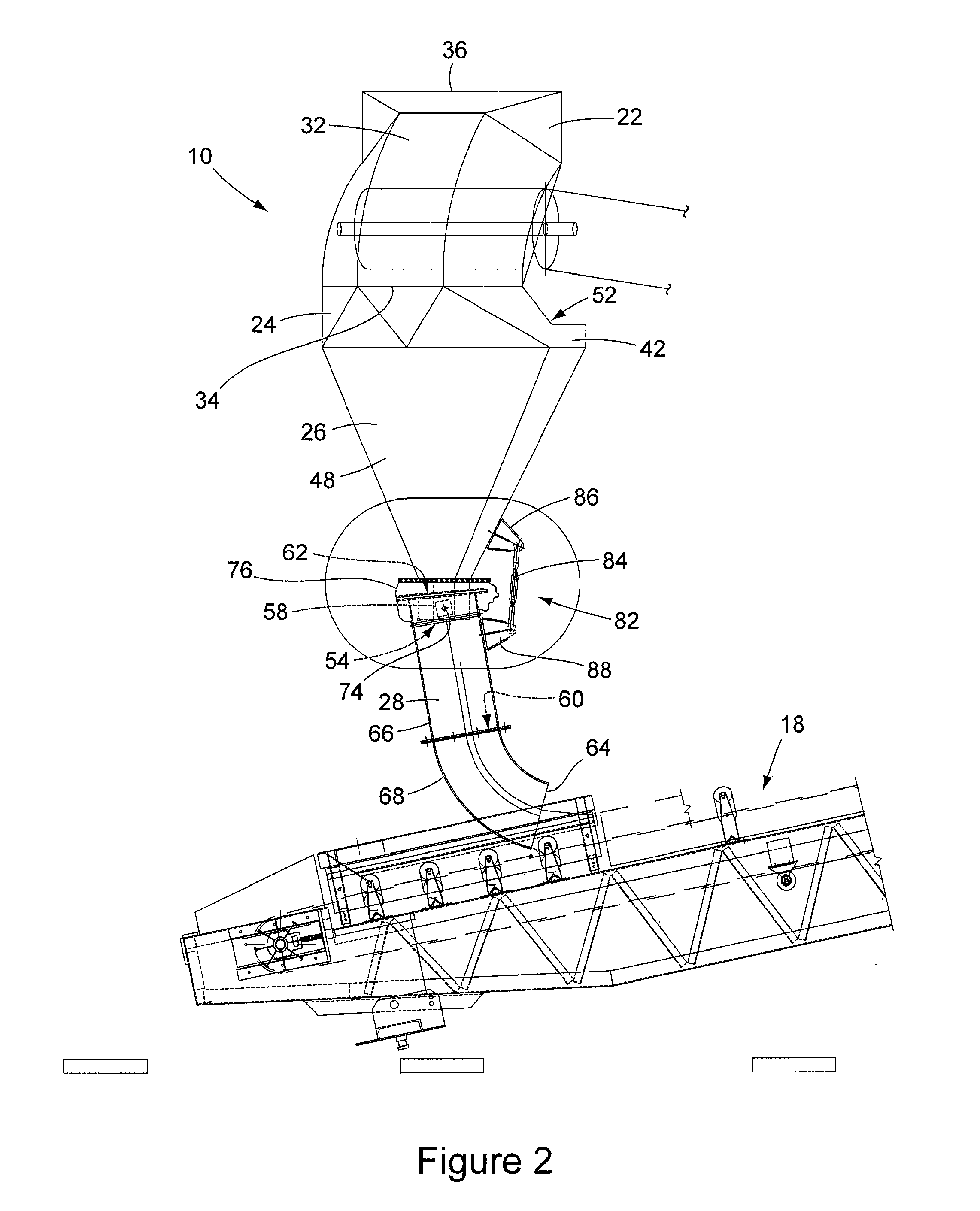Bulk material precision transfer chute apparatus
a technology of precision transfer chute and bulk material, which is applied in the direction of conveyor parts, loading/unloading, packaging, etc., can solve the problems of increasing the cost of operating the conveyor, disadvantaged in several respects of the conventional bulk material transfer chute described above, and material turbulence, so as to prevent material puddles and minimize material spillage
- Summary
- Abstract
- Description
- Claims
- Application Information
AI Technical Summary
Benefits of technology
Problems solved by technology
Method used
Image
Examples
Embodiment Construction
[0033]FIGS. 1 and 2 show an embodiment of the bulk material precision transfer chute apparatus 10 of the present invention. The apparatus 10 is shown in FIG. 1 supported by a schematically represented framework 14 between the discharge end of a discharge conveyor 16 and the receiving end of a receiving conveyor 18. In the illustrative environment of the apparatus 10 shown in FIGS. 1, 2, and 3, the apparatus is used to transfer bulk material, for example coal, from the discharge conveyor 16 positioned above the apparatus to the receiving conveyor 18 positioned below the apparatus. It should be understood that the environment shown in FIGS. 1, 2, and 3 is illustrative only, and should not be interpreted as limiting. As shown in FIGS. 1 and 2, the bulk material transfer apparatus 10 of the invention is basically comprised of a hood 22 positioned at the top of the apparatus, a transition section 26 positioned below the hood 22, and a loading tube 28 positioned below the transition secti...
PUM
 Login to View More
Login to View More Abstract
Description
Claims
Application Information
 Login to View More
Login to View More - R&D
- Intellectual Property
- Life Sciences
- Materials
- Tech Scout
- Unparalleled Data Quality
- Higher Quality Content
- 60% Fewer Hallucinations
Browse by: Latest US Patents, China's latest patents, Technical Efficacy Thesaurus, Application Domain, Technology Topic, Popular Technical Reports.
© 2025 PatSnap. All rights reserved.Legal|Privacy policy|Modern Slavery Act Transparency Statement|Sitemap|About US| Contact US: help@patsnap.com



